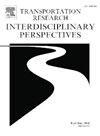揭示公路铁路道口货车-挂车和客车碰撞的驾驶员伤害严重程度风险
IF 3.8
Q2 TRANSPORTATION
Transportation Research Interdisciplinary Perspectives
Pub Date : 2025-05-01
DOI:10.1016/j.trip.2025.101451
引用次数: 0
摘要
公路-铁路交叉路口是运输拖车的卡车轨迹与铁路轨道相交的关键路口。这些大型卡车和火车在这些交汇处共存,对乘用车、卡车拖车、火车和公路铁路交叉基础设施构成了固有的安全、健康和环境风险。利用美国5年的碰撞数据,使用均值和方差均不均匀的混合logit模型对驾驶员伤害严重程度进行建模,探索乘用车和卡车拖车在平交道口的危险因素。铁路道口卡车-挂车和客车碰撞的估计模型包括空间变量、天气条件、环境照明、车辆在道口上的机动、驾驶员的年龄和性别、道口操作特征、警告标志的位置、道口警告(包括门)的类型、道口卡车-挂车的停车位置以及铁路设备释放的有害物质等因素。这些因素被发现影响不同程度的驾驶员伤害严重程度。估计模型的边际效应表明,与涉及乘用车的碰撞相比,涉及卡车拖车的碰撞,特别是在德克萨斯州的十字路口,更有可能导致更高的司机死亡率。当十字路口警告和高速公路信号没有相互连接时,或者当警告位于十字路口的两侧时,这些事故也更有可能发生。改善道路基础设施,特别是将公路信号与铁路道口警告相结合,是提高安全的关键因素之一。此外,通过卡车司机培训模块进行教育、开展外展工作,并采取执法措施防止车辆过闸,对于加强铁路道口的安全至关重要。本文章由计算机程序翻译,如有差异,请以英文原文为准。
Uncovering the risks for driver injury severities for truck-trailer and passenger car crashes at highway-railroad crossings
Highway-railroad crossings are critical intersections where the trajectory of trucks hauling trailers intersects with railway tracks. The coexistence of these large trucks and trains at these junctions poses inherent safety, health, and environmental risks for passenger cars, truck-trailers, trains, and highway-rail crossing infrastructures. Five years of US crash data were utilized to model driver injury severity using a mixed logit model with heterogeneity in means and variances, exploring the risk factors for passenger cars and truck-trailers at a grade crossing. The estimated model for truck-trailer and passenger car crashes at railroad crossings included factors, such as spatial variables, weather conditions, ambient lighting, vehicle maneuvers over the crossing, driver age and gender, gate operation characteristics, the location of warning signs, the type of crossing warning (including gates), the stopping position of the truck-trailer on the crossing, and the release of hazardous materials by rail equipment. These factors were found to influence different levels of driver injury severity. The marginal effects of the estimated models showed that crashes involving truck-trailers, particularly those at crossings in Texas, were more likely to result in higher driver fatalities compared to crashes involving passenger cars. These crashes were also more likely to occur when crossing warnings and highway signals were not interconnected, or when warnings were located on both sides of the crossing. Improving roadway infrastructure, especially by integrating highway signals with rail-grade crossing warnings, is one of the critical factors in enhancing safety. Additionally, education through truck driver training modules, outreach efforts, and enforcement to prevent vehicles from crossing the gates are critical for enhancing safety at rail-grade crossings.
求助全文
通过发布文献求助,成功后即可免费获取论文全文。
去求助
来源期刊

Transportation Research Interdisciplinary Perspectives
Engineering-Automotive Engineering
CiteScore
12.90
自引率
0.00%
发文量
185
审稿时长
22 weeks
 求助内容:
求助内容: 应助结果提醒方式:
应助结果提醒方式:


